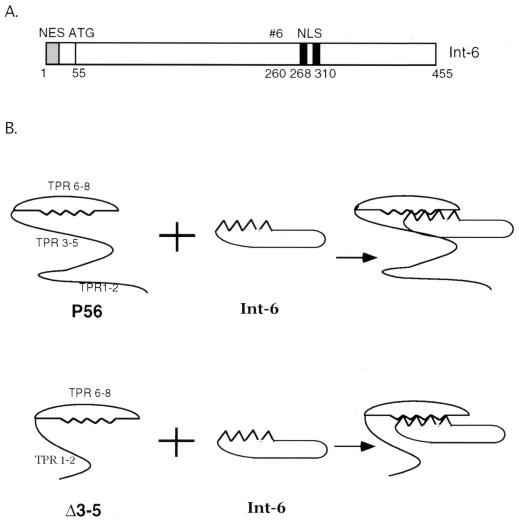FIG. 6.
Model for interaction between P56 and Int6. (A) The full-length Int6 protein is shown. The N-terminal NES is shown by the gray box. The black boxes represent the bipartite nuclear localization signal (NLS). The internal ATG at amino acid 55 is shown. #6 represents the start point of the yeast clone which contains aa 260 to 455 of Int6 and was identified by the yeast two-hybrid assay in interactions of Int6 with P56. (B) Model for interaction between P56 and Int6. The upper panel shows that in wt P56, TPR motifs 6 to 8 form a scaffold that interacts with Int6. However, the presence of TPR motifs 3 to 5 makes it difficult for Int6 to access the scaffold. In the lower panel, deletion of TPR motifs 3 to 5 opens up the scaffold and Int6 can freely get in touch with TPR motifs 6 to 8 of P56. As a result, the interaction between Int6 and Δ3-5 is stronger than that between Int6 and wt P56.

